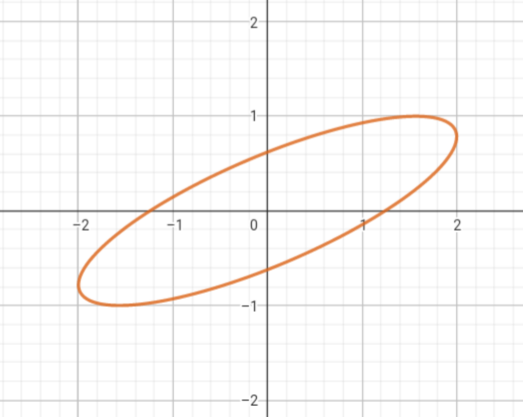So, I was studying about the combination of two simple harmonic motions (S.H.M.) in the perpendicular direction withstand frequency, but with different amplitude and phases; and, I also studied the graphs in the X-Y plane, depicting the motion of a particle under the influence of forces corresponding to the above S.H.M., which looked like this 
Assuming, that the values of the parameters is not needed here, as it is for representation purpose only.
I know that this absolutely doesn't look like an ellipse, but being a mathematics student, I would be only satisfied by a formal proof that this graph is not an ellipse.
Hence, my question is: how would you go on proving that the above graph is not an ellipse?
